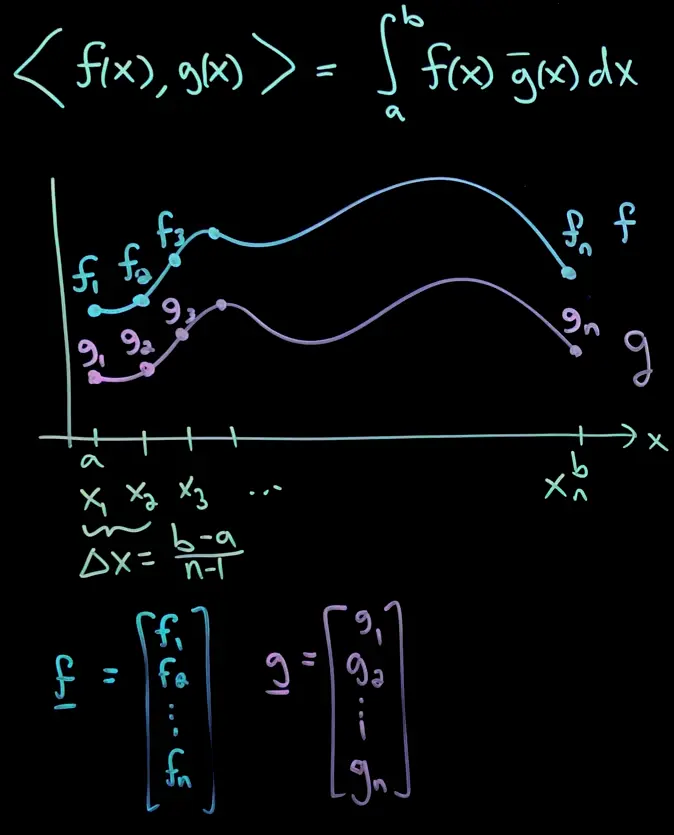We can represent a function as a sum of cosines and sines of increasingly high frequency:
The coefficients and are found by projecting 1 onto the basis functions and by computing the inner product between and each basis function. 2
This works because the set of functions form an orthonormal basis for the space of periodic functions with period , after we normalize them.
In the above example, is assumed to be periodic with period .
For a function with period 3, we can scale the basis functions accordingly 4:
If the function is not periodic, we can still use Fourier series to approximate it over a finite interval by treating the interval as one period of a periodic function (the fourier series will just keep repeating it).
fourier analysis
approximation
Footnotes
-
↩
Link to originalVector decomposition via projection
Any vector can be decomposed relative to a direction :
where points along and is orthogonal to it.
The projection is the foot of the perpendicular from to . The perpendicular component is:
The inner product measures how much points along . Scaling by gives the right coefficient:
If is already a unit vector, this simplifies:
For orthogonal basis vectors, any vector decomposes into projections onto each basis direction. Same vector in different bases or :
Each coefficient tells you how much of that basis vector appears in .
-
↩
Link to originalInner Product of two functions
For two functions on the interval , the inner product is defined as:
It has all the same properties as any inner product, and tells you how aligned two functions are.
The bar denotes the complex conjugate, so (positive definiteness).
For real-valued functions, the bar can be omitted.This can be thought of taking the dot product of two vectors with infinitely many components, one at each in the interval, or rather it is just the Riemann approximation: .

-
formally, , meaning it is in the hilbert space of square integrable functions over the interval , i.e. has a bounded integral of its square over that interval, i.e. the integral ↩
-
Transclude of trigonometric-function#^7d381d
↩